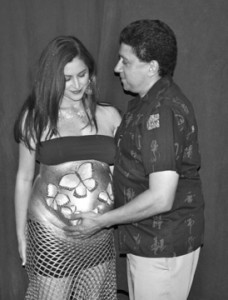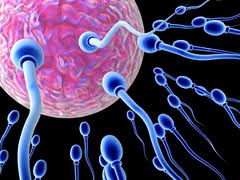by Jasmine | May 1, 2016 | Couples Yoga, Fertility, fertility health
Yoga Poses for Infertility at Intimate Couples Retreats or at Studios.
All too often, women trying to conceive get caught up in the frenzy of time running out (hence the phrase biological clock), as if their bodies were bombs ticking away, about to detonate into an explosion of birth or an implosion of infertility. 
Yoga, with its spotlight on dropping into the present moment, helps people avoid becoming fixated on future. It helps would-be parents in other ways, too. One of its main benefits—reducing stress levels—takes the body out of its fertility-hindering fight-or-flight mode.
If the body has to concentrate its resources on controlling stress, energy gets diverted away from reproduction. Since stress can constrict blood vessels, including those in the uterus, a yoga practice designed with the intention of lowering stress can only help with overall health and fertility.
Stress plays a part in every single illness. If you are in a stressed state, you don’t have the hormonal profile of someone who is likely to get pregnant. A gentle restorative yoga practice that pays special attention to the qualities of opening, softening, and yielding are the most beneficial for reproductive health.
Within the yoga lexicon, inverted poses shine as excellent asanas for balancing the endocrine system, soothing rattled nerves, clearing the mind, resting the heart, and increasing circulation. Normally performed at the end of a practice, they can also stand alone as a quick time-out. One of the simplest and most effective poses, Legs Up the Wall Pose (Viparita Karani), restores beginners and advanced yogis alike.
Quality rest, like the one found in Legs-Up-the-Wall Pose in which you lie on your back, palms facing up and feet spread apart with legs up in the air but resting against the wall as well as corpse pose, are the most important poses for fertility. Living in a highly wired world we are in a state of low-lying anxiety all the time. To rebalance our hormones, conscious rest is essential. The quintessential restorative pose for everywoman is Reclining Butterfly Pose, in which you lie over a bolster with the soles of your feet together.
It’s so important in our fast-paced society to rest consciously everyday—it reestablishes hormonal balance. The quintessential restorative pose for everywoman is Reclining Butterfly Pose, in which you lie over a bolster with the soles of your feet together. It helps to open all areas of the reproductive system, the pelvis, the ovaries, the fallopian tubes, the hips and the groin. Since your arms are spread wide and your chest is opened up, it is incredibly heart-opening as well.
Yoga Retreats or Intimate Couples Retreats are ideal venues to work on yoga for fertility. Couples yoga help partners connect on a kinesthetic level at the level of soul. You also enrich your spirit by focusing on your beloved and letting your beloved be focused on you.
What are things you and your sweetie do together to tone up and bond (keep it PG Rated guys)…..? Post your thoughts on our Facebook page.
Jasmine offers beginner and introduction classes that connect you to a place of deep peace that leaves you feeling refreshed and renewed at wallet-friendly prices. She offers partner yoga, couples yoga classes, yoga meditation, prenatal yoga, gentle yoga for the stiff and inflexible and beginner yoga. People that are interested in Yoga Retreats, Yoga and Meditation Classes, Thai Massage, Massage for Couples, romantic retreats, Romantic places in Philadelphia, Philadelphia date ideas or just people just looking for meaningful, and soulful ways to connect will benefit.
by Jasmine | Oct 26, 2015 | Fertility, fertility health, Foods For Fertility, infertility
Food has such a direct link between conception and health. If you are not eating foods that are nutrient dense then your reproductive system will be much more challenged. Foods runs our bodies……. in this country we mostly eat food for survival but not to flourish.

Is the produce you are eating loaded with fungicides, pesticides and other “cides”? Do you ever buy organic? How often? Have you ever heard of “the dirty dozen? The top produce that has the most pesticides in them? Usually the produce with thinner skins and peels such as peaches, strawberries absorb more pesticides.
What is a typical breakfast, lunch and dinner for you? Do you make your own food or do you always buy fast, processed or frozen food? How do you feel after you eat? Are you lethargic and ready for a nap or does it give you the energy to keep on going?
How can you “eat the rainbow” more… filling your plate with more colorful fruits and vegetables and reducing empty calories with things like white breads, white rice and white flour.
When you read the ingredients are they filled with chemicals? Making your own food is one of the most nourishing things you can do for yourself and it will have the side benefit of making your wallet happy as well.
Keep your wallet fat, not your waistline.
What is one choice you can make today about the food you eat that can become a habit? Can you eliminate the candy bar after lunch? Can you choose to buy mostly organic?
Can you incorporate a salad into your dinner every night? Can you order a side of vegetables instead of french fries when you eat out. If you are overweight or obese that will make getting pregnant more difficult. Do you need additional support to get down to a healthy pre-pregnancy weight?
Here are some specific nutrients that can boost your fertility health.
IODINE FOR FERTILITY
Iodine, a non metallic trace element, is required by our bodies for making thyroid hormones. As in, if you do not have enough iodine in your body you can not make enough thyroid hormones.
When our bodies are deficient in this element, it affects our thyroid, adrenals, and entire endocrine system. Not only is it important in a fertility diet, it’s essential in the prenatal and nursing period as well.
Infant mortality rates start to climb in areas known for iodine deficiency, and it’s also been linked to higher rates of miscarriage and still birth.
It used to be prevalent in our soil, but unfortunately we’ve destroyed so many of the nutrients with bad farming practices and chemicals that much of what we currently grow is lacking in key nutrients, iodine being one of them.
While it’s not found in our soil near as much, it is still prevalent in seafoods. Our bodies can not make it on their own, so you must consume iodine in your diet.
- Fruits and Vegetables grown by the sea, including coconut products
Blackstrap molasses
- Saltwater fish; haddock, whiting, herring
- Butter from cows fed on iodine rich soil
- Dried Kelp
- Spinach
- Milk and dairy products (at least 20% of iodine is lost during pasteurization so raw is best)
- Eggs
What about Iodized salt?
(and while iodized salt is actually quite high in iodine, it’ can be rather hard for our bodies to assimilate)
The recommended RDA is a small 150 mcgs for women and increase to 220 when pregnant and 290 when nursing, but are you even eating foods that contain iodine in them?
On the other side of the deficiency coin, is that to much in your body isn’t a good thing either. And because iodine directly affects your thyroid and hormones it may be something you want to work with a health professional on.
OMEGA 3 FATTY ACIDS FOR FERTILITY
There are 3 different types of omega 3 fats; alpha-linolenic acid (ALA- plant based), eicosapentaenioc acid (EPA – animal based), and docosahexaenioc acid (DHA – animal based). Plant based ALA can be found in:

Super Foods For Fertility – Eat To Conceive
- Walnuts
- Chia Seeds
- Flaxseed
- Hemp
Animal based EPA and DHA can be found in:
- Egg yolks from pastured chickens {contain two to four times the amount of omega 3’s as conventional eggs and oily
- Coldwater fish like salmon, herring, tuna, cod, and trout
These healthy fats have been shown to help increase a womans fertility by regulating hormones and ovulation as well as increasing both the quantity of fertile cervical mucous and the blood flow to the reproductive organs.
It is also thought that these good fats help women who are suffering from endometriosis.¹
And a study done last year suggests that women suffering from infertility, on average, have lower levels of omega 3 fats.
Men who do not have enough omega 3’s in their system may have issues with sperm production since the DHA within these good fats help protect the sperm from free radicals and damage.
So, how often do you eat foods that are high in nutrients for increased fertility? Other the last few weeks we’ve looked at some of the many things our bodies need – where are you lacking?
by Jasmine | Oct 21, 2015 | Fertility, Fertility Expert, fertility health, Fertility Tests, infertility
Tests – Have you had any diagnostic fertility tests by healthcare providers to ensure there is nothing mechanically wrong with your tubes or your partner’s sperm? Are you over 35? Have you been struggling with conceiving for more than 6 months? 
Some basic fertility tests can make sure that there are no blocked tubes, polpys or low sperm count that could making getting pregnant without Assisted Reproductive Technology (ART).
Find a Reproductive Endocrinologist to help you through this process which you can usually find at any fertility center.
Do you possibly have endometriosis? An undiagnosed thyroid condition? Does your husband have a low sperm count? All of these conditions can be undiagnosed for a long time and can be blocks to fertility.
by Jasmine | Oct 3, 2015 | Conceiving Naturally, Fertility, fertility health, yoga infertility
Is your partner aware of what is involved in the path to fertility? Is he making changes to his health routine? Men’s health has just a critical role in conception. Things such as alcohol, being overweight, no exercise, bad sleep, too much caffeine and too many toxins can affect sperm motility (how fast the spermies swim)
How involved is your partner in making lifestyle change for himself?
How supportive is he of you making lifestyle changes such as eating different foods, getting out to exercise, throwing out toxic products and clearing out space in your home to get rid of clutter?
Does he come with you to doctor appointments that are about your reproductive health?
Is he aware of some of the challenges involved in getting pregnant with Assisted Reproductive Technology such as IVF? Is he open to getting tested as well for sperm motility?
The more involved and supportive you both are as a couple, the smoother your path to pregnancy will be.
by Jasmine | Apr 16, 2015 | fertility health, Prenatal Yoga, yoga fertility, Yoga Health, yoga pregnancy
Often women that are pregnant discover yoga since it is a way to heal, gain body awareness and nurture oneself. Yoga when you are pregnant helps to strengthen the body for child bearing and aids in relieving the common discomforts the body experiences. Yoga helps you find the time and space to look within yourself, allowing you to openly explore your own intrinsic knowledge about the cycles of life. It is an opportunity to come together with a circle of women to share and connect with some of the dreams and scares that pregnancy brings as well.
A prenatal and postnatal yoga practice can help you
- Support your health before and after pregnancy
- Connect you with other parents who are at all stages of pregnancy
- Improve your postpartum recovery
- Helps to strengthen the body for child bearing and aids in relieving the common discomforts the body experiences.

Best and Worst Yoga Poses to do When You are Pregnant
- Alleviate many of the discomforts of pregnancy such as nausea, constipation, varicose veins, swelling, back pain and sciatica.
Cautions about practicing yoga while pregnant:
Since nausea is common during the first part of pregnancy it may be helpful to practice in a well-ventilated room. During the second trimester your growing belly will require modifying some poses. Use common sense and avoid putting too much pressure on the abdomen in poses like Head To Knee Postures, Seated Forward Fold, as well as Seated Spinal Twists. You may choose to reduce the amount of vinyasa if generating heat in the body makes you uncomfortable.
Best and Worst Yoga Poses to do When You are Pregnant
The third trimester will require you to continue to adapt and even omit certain postures. Standing poses like Extended Triangle Pose, and Extended Side Angle Pose can help relieve back pain. And a simple inversion such as Legs-Up-the-Wall-Pose can help to relieve puffy ankles. Some poses might require additional props or support. Through each trimester the most important thing is to tune in to what your body is telling you and alter your practice accordingly. During and after pregnancy, try not to be attached to your level of flexibility. Pregnancy is a great time to learn how to emotionally, spiritually and physically release.
Other words of wisdom for pregnant women interested in yoga: Linking yoga postures with breath will lead you to new discoveries, bringing awareness to the mind, body and soul, and also the spirit of your growing baby. Your practice will help to foster a sense of calm and acceptance as well as strengthen the uterus and pelvic muscles, aid in digestion, exercise the spine and increase overall comfort. Yoga can also alleviate many of the discomforts of pregnancy such as nausea, varicose veins, swelling, back pain and sciatica. Being in a community gives you access to a safe circle so you can freely discuss any issues, from discomforts and concerns, to the wonderful new changes your body and baby are experiencing. It is very important to inform the teacher of any complications (current or past) or any treatment that you are receiving.
During pregnancy ligaments around the joints become loose and soft. Care should therefore be taken not to overstretch the body. The abdomen should remain relaxed and soft at all times to allow room for the baby.
Pregnancy can make you feel more tired than usual. It is essential to be aware of this and try not to do things to the point of fatigue. If you feel tired after yoga or any other physical exercise, it means that the practice has been faulty or that you have done too much. Signals such as pains, stitches, cramps, nausea, dizziness, headaches and contractions should never be felt during or after yoga practice. Yoga generates energy, rather than dissipating it.






